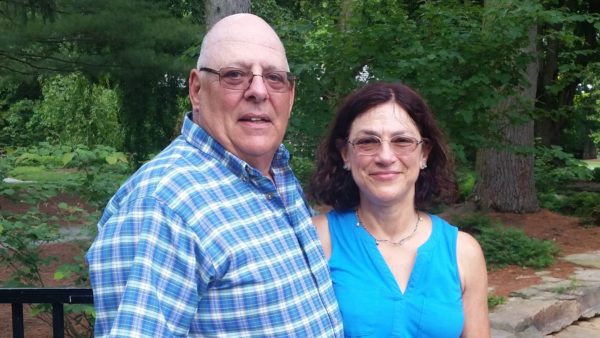Surgery and Pemphigus Foliaceus: Joe’s Story


Having a rare autoimmune disease is scary. Once you receive a diagnosis by a dermatologist experienced in treating pemphigus, it’s advisable to have all of your doctors communicate with your dermatologist (Internist, OB-GYN, Dentist, Orthopedist, and other specialists). Each healthcare provider must be aware of your complete health history and all medications that you take, including over-the-counter medications, vitamins, and supplements.
Because pemphigus is a skin-blistering disease, any invasive surgery may have repercussions. Accidents such as getting a paper cut, falling off of a bike, or tearing skin on the knee may also be problematic. Needing to have surgery when you have an autoimmune disease is even more of a challenge, especially if you need to have an implant. Open and clear communication is an extremely important aspect to healthcare in general, but it’s even more important in cases with pemphigus and pemphigoid (P/P). Any surgery involves risk and is a personal decision to proceed on a case-by-case basis. Even if you’ve been in remission for more than a year, it’s advisable to discuss any surgeries with your dermatologist so that all precautions can be taken in coordination with your surgeon. Once you’ve made the decision and arranged an operation date, it’s important to discuss all medications that you’re taking with your surgeon and anesthesiologist. Usually they’re aware, but it’s better to have the conversation.
Joe, a patient in remission, has shared his journey with me regarding pemphigus foliaceus and surgery.
In October 2004, I was diagnosed with pemphigus foliaceus. I was scared and worried about what would happen to me. I got through the shock and got on with my life as best as I could. I was put on 80 mg of prednisone and 4500 mg of CellCept® a day. In May 2005, I had a heart attack and developed atrial fibrillation. We discussed getting a pacemaker with the doctor, but were concerned about putting something artificial in my body when my immune system was so compromised. Instead, I had an ablation.
In 2009, I was referred to Dr. Victoria Werth at the University of Pennsylvania by my local dermatologist. She prescribed my first round of rituxan. I was finally able to taper off both the prednisone and CellCept®. I was in remission until 2011, when I underwent another round of rituxan. Other than the occasional sore in my mouth, I did well. I did have a tiny bit of activity on my skin, but clobetasol kept it in check.
In 2014 both my knees needed to be replaced due to the stress of normal living and physical work. I had my left knee replaced in January 2015, and the recovery went well. In January 2016, I had the right knee replaced. Within three or four days of my surgery I started getting small blisters around the incision site. For awhile I tried to keep it under control with the clobetasol. When I realized I was losing the battle, I called Dr. Werth’s office for an appointment. They got me in within a week. Dr. Werth was surprised that I had been in remission almost five years, since the second set of rituxan infusions. She immediately put me on 40 mg of prednisone and sent a referral to Dr. Donald Tsai at the Abramson Cancer Center at Penn to arrange for a round of rituxan. The following week, I met with Dr. Tsai, and less than a week later, I had my first infusion. I gradually decreased the prednisone, and I am again in remission. I would say to anyone who needs a joint replacement to go ahead and do it, but always consult with your doctor and dermatologist. Thank you for reading my story, and good luck to you all.
The IPPF thanks Joe for sharing his experience. We hope that if you have to decide whether to have surgery in the future that you will take the precautionary steps. It’s important to ensure that the level of activity with your antibodies doesn’t become jeopardized, or if you’re in remission at the time, that there are no repercussions.
